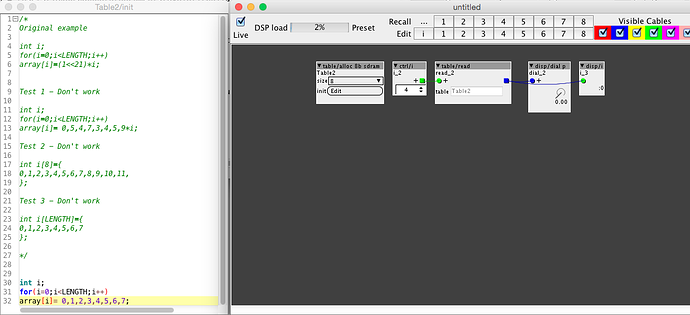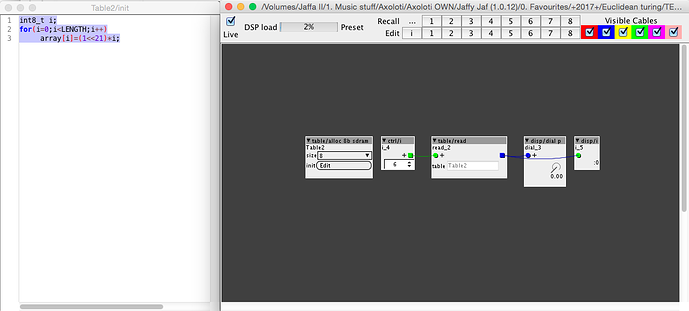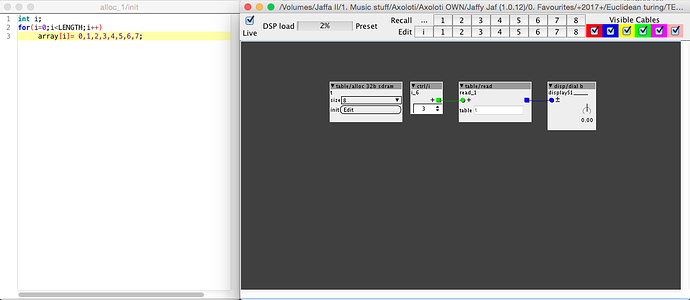Hey and merry chippin' Xmas 
I have been making some files using Axoloti, which is basically just 128 random numbers stored onto the SD-card. They are created and then saved in a table and then stored to SD-card using table/save, so I can call them up later.
Now I was looking for an easier way to edit and/or even create files with, for example random numbers in, that can be read by Axolotis tables.
So my questions are:
Which program would be suitable to edit these table files... .tab files..... that I've created with Axoloti?
Or even just create new files directly in the program, with numbers, list or whatever that I can load in Axolotis tables?
What I've tried:
I tried opening one of the files in Text Wrangler, but that didnt work, all data came up as question marks.
I also tried X-code, but the only thing I see is an executable file and doesnt show me any content of the file. But to be honest I am also new to Xcode, so I might be missing something.
One of the files I tried opening in TW/Xcode is similar to the one created with @SirSickSik's object called sss/harmony/scaleGenerator
(Just add it to a patch load the patch and it will create the file on the SD-card. I am not allowed to upload .tab files so you need to fetch it, create it yourself if you want to test it, but it is very easy. Anyway that was the filetype I tried opening with no luck).
Any ideas?
Good evening!

 So I can't edit it.
So I can't edit it.


